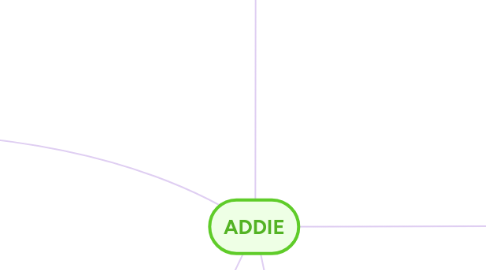
1. Evaluate Assess the quality of the instructional products and processes, both before and after implementation
1.1. Determine evaluation criteria we can use the evaluating training programs: four levels
1.2. Select evaluation tools
1.3. Conduct evaluations
2. Implement prepare the learning environment and engage the learner
2.1. Prepare the trainer/facilitator/instructor The component of the prepare the trainer/facilitator/instructor procedure is a facilitator plan.
2.1.1. Identification fit with te
2.1.2. Schedule
2.1.3. Train the trainer
2.2. Prepare the learner
2.2.1. Identification
2.2.2. Schedule
2.2.3. Pre-course communication
2.2.4. Tracking
3. Analyze identify the probable causes for a performance gap
3.1. Validate the performance gap: instructional designers are often requested to develop instructiona for knowledge people already possess or skills people can already perform. the purpose of instructional design is to generate instruction where a lack of knowledge and skill exists
3.1.1. measure the actual performance
3.1.2. confirm the desired performance
3.1.3. identify the causes for the performance gap
3.2. Determine instructional goals: a gos is defined as the end toward which all effort is directed. a description of a board expectation. effective goals are the result of a shared decision-making process, situated within some contect, a reflection of some reality, valid and authentic.
3.2.1. Learning is also organized by cognitive domains such as Bloom's Taxonomy
3.3. Confirm the intended audience: assist you in confirming the members of the intended student audience
3.3.1. Group idedntification
3.3.2. General characteristics
3.3.3. Numbers of learners
3.3.4. Location of learners
3.3.5. Experience level
3.3.6. Learners attitudes
3.3.7. Skills that impact potential to succeed in the learning enironment
3.4. Identify required resources
3.4.1. Content resources
3.4.2. Technology resources
3.4.3. Instructional facilities
3.4.4. human resources
3.5. Determine potential delivery system is to evaluate different instructional delivery systems and recommend the best option that has the greatest potential to close the performance gap
3.5.1. Physical face-to-face meetings
3.5.2. computer based training
3.5.3. Video
3.5.4. Blended learning
4. Design Verify the desired performances and appropriate testing methods
4.1. Conduct a task inventory organizes the content so that the learner can construct the knowledge and skills necessary to achieve the instructional goals
4.1.1. Repeat the purpose statement
4.1.2. Reaffirm the instructional goals
4.1.3. Identify the essential performance tasks
4.2. Compose performance objectives Performance objectives is the destination for an instructional episode. While the instructional goals provide the general expectations, performance objectives provide the specific expectations
4.2.1. Performance What the learner will do?
4.2.2. Condition important circumtances under which the performance is expected to occur
4.2.3. Criteria The quality or standard of performance that is considered acceptable
4.3. Generate testing strategies Testing provides feedback to the trainer about whether learning is occuring, to the learner about the progress he or she is making toward accomplishing the performance tasks, and to the designer about how well the instruction is facilitating the goals and objectives
4.3.1. Performance match
4.3.2. Condition match
4.3.3. Criteria match
